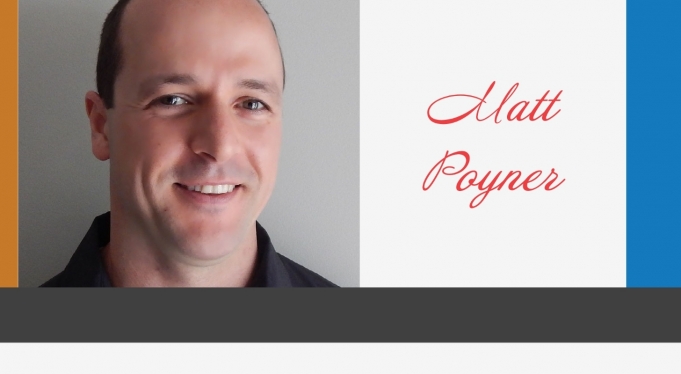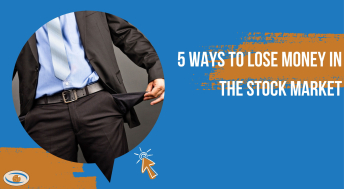This article was originally published in the July 2020 edition of Canadian Money Saver Magazine. To learn more about the Magazine, please visit : canadianmoneysaver.ca
Written by Matt Poyner

Advice is loud when the person giving it has something to gain, and the financial services industry has a lot to gain by convincing you that the best place for your money is in their hands. To be fair, there can be value in the services of some financial advisors. But the other side of this story needs to be told: many investors are better off taking a Do-it-Yourself (DIY) approach.
Investors often start managing their own money reluctantly, feeling like underdogs to the pros. But has it ever occurred to you that DIY investors actually may have the advantage? In fact, behavioural finance has shone a light on numerous ways in which professionals, often through no fault of their own, are set-up for failure when it comes to growing the wealth of their clients.
With a little knowledge and interest in personal finance, individual investors can, and do, beat the pros. It happens all the time. You don’t hear about it because, unlike the financial services industry, most of us don’t have anything to gain by spreading that message. It’s not luck, nor is it access to some secret tome of investment knowledge. A major factor in our success is that DIY investors simply don’t have to deal with the same fees, culture, and constraints that the pros do.
Here are ten reasons why managing your own money will often beat the pros:
1. Save on fees
We’ve heard it a million times before, but even deceptively small fees have a massive negative impact on wealth. Investing $100k at seven per cent for 35 years will result in a tidy nest egg of almost $1.1 million. Tacking on an annual two per cent fee might not sound like much but would effectively cut your final balance in half. Financial services represent a 63 billion dollar industry in Canada—63 billion dollars from fees of various forms. There are a lot of well-meaning people working in it, but the fact is that the industry is built upon increasing their wealth, not yours. Saving fees by investing your own money might be the most important financial decision you can make.
2. Choose investments based on appropriateness rather than compensation
Because the vast majority of financial advisors in Canada are compensated based on the investments they select for their clients, rather than by their clients directly, what is best for the investor is frequently at odds with what is best for the advisor. Put yourself in their shoes: as an advisor, would you suggest the broad-based mutual fund that will kick back a generous fee into your account, or the index fund that will pay you nothing but accomplish the same goal for the client and save them tens of thousands of dollars? The incentives of paid professionals can never be truly aligned with the investor.
3. No one knows your values like you do
Aligning incentives with financial goals is essential, but understanding those goals is even more important. Having a lot of money is not a worthy goal in itself; it is what can be accomplished with that money that is important. This is about values. The financial services industry is a construct of capitalism—it values profit above all else. You may like the feeling of financial security, but I would bet that other values are equally or even more important to you: family, community, personal development, philanthropy, etc. Money is a tool that can help you create the life you want to live. Why paint the picture of your life by paying someone else to hold the brush for you?
4. Tune out the noise
Professionals are constantly exposed to a barrage of investment information. The signal to noise ratio from the firehose of daily news is vanishingly small, while the cognitive toll is high. They are compelled to pay attention to short-term volatility which triggers the most destructive behavioural errors. DIY investors, on the other hand, have the luxury of tuning out the noise, developing a sound long-term strategy, setting it in motion, and checking our portfolios only when appropriate—perhaps every six to twelve months.
5. No comparison
Because of their compensation structure, professional money managers are always comparing their actions and performance to that of their peers. Strategies that are popular but risky are overused (a factor in the growth of bubbles), while those that are sound but unpopular are under-utilized. There are enormous incentives to stick with the herd, hence the most popular mutual funds are essentially closet index funds with high fees. DIY investors need not be influenced by such financial peer pressure.
6. True long-term outlook
We all know that it’s the long-term that matters, but professionals are hamstrung by a culture that prioritizes short-term outcomes over long-term goals. Compensation models are built on quarterly and annual metrics so there is enormous pressure to abandon sound investing principles if they are temporarily underperforming. Furthermore, professional money management is an intensely competitive environment. Even if compensation is not directly tied to short-term outcomes, the optics of short-term inferior performance relative to peers is an intolerable position—even if it is in the best interests of investors. DIY investors face no such issues and are free to focus on what matters: long term performance.
7. It’s okay to do nothing
Over-activity is the enemy of performance; not only does frequent trading rack up fees, it often has negative tax implications and, most importantly, exposes the investor to more situations in which to fall prey to behavioural errors. There are three reasons professional investors fall prey to over-activity: first, they are compelled to act by constant awareness of market volatility and financial news-feeds; second, inactivity may be misconstrued as incompetence by peers and superiors; third, it is difficult to justify high fees by doing less, even when it is the right thing to do. DIY investors, on the other hand, have the liberating ability to make evidence-based long- term investment decisions, then leave those accounts alone. As Buffet has said, “The stock market is designed to transfer money from the active to the patient.”
8. Benchmark blindness
Comparing portfolio performance to a benchmark is one of the most popular ways to gauge the ability of a professional investor, but this practice carries significant behavioural risks. By focusing on short-term outcomes rather than a sound investing process, all kinds of behavioural errors come into play. Decisions are driven not by logic and evidence, but a myopic obsession with short-term comparisons. DIY investors need not be concerned with such benchmarks and are free to focus on process rather than outcomes.
9. Time horizon clarity
Time horizons are an important factor when creating a financial plan, and are relatively simple for the individual investor; are you planning for a twenty-year retirement? Thirty? Forty? It is not so simple for professional investors. Are investment decisions made based on quarterly performance reviews? Annual fee targets? The three-year minimum assessment window for professional fund managers? Conflicting time horizons compromises good decision making. All of us are susceptible to short-term thinking, but professional investors are especially vulnerable.
10. It doesn’t have to look good to anyone else
If you’re starting to get a sense of how difficult it is for professional investors to make good decisions, you’re on the right track. Here’s one more subtle but important point: It is far easier to sell a portfolio if it contains long-term winners, even if the fund hasn’t held those winners for very long. This is one reason professional investors often sell out of underperforming assets (sell low) and buy into hot stocks (buy high). When you are forced to consider the optics of your behaviour, it is often easier to justify conformity and failure than unpopular positions with a higher chance of success. The portfolios of DIY investors only need to look good to themselves.
Whether you are a professional or amateur, investing is rife with behavioural pitfalls. But there is no reason to believe that successful DIY investors are lucky or the exception to the rule. In fact, there are numerous structural reasons inherent in the financial services industry that put professional investors at a disadvantage to DIY investors. These largely revolve around fees, short-term thinking and over-activity.
There are many investment styles that DIY investors have used successfully. The one I have used and now write about is based on dividend investing using the Beating the TSX strategy. This is a simple system anyone can use to build a no-fee, low-maintenance portfolio of large Canadian dividend paying stocks. Over the last thirty years it has out-performed the index by two to three per cent annually (on average), with minimal annual updating.
Matt Poyner is a DIY investor who has been using the Beating the TSX strategy for over ten years to achieve financial independence. You can learn more about dividend investing and BTSX in particular on his blog: dividendstrategy.ca.
Not a 5i Member yet? Here is your chance! Try it for free for the 30 days and experience all the benefits of the 5i Research membership. (And don't worry. We won't ask for your credit card upfront)







Comments
Login to post a comment.